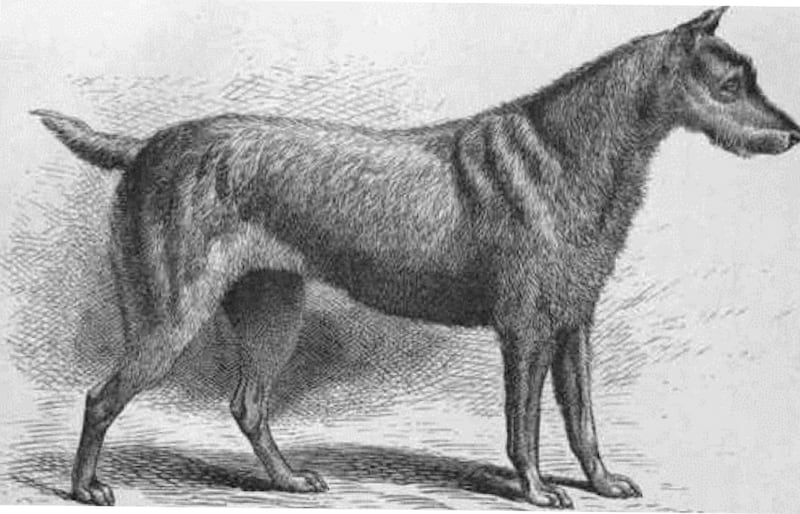An English writer in the mid-nineteenth century described Ireland as famous for “its horses, its women and its dogs”. Had he been writing a century later, he might have added “writers” to his patronising comment. In fact, Irish writers and Irish dogs have sometimes occupied the same literary space – which may not be so surprising since we have one of the highest proportion of dog ownership in the world.
<strong>Beckett found he "could not take a reasonable view" of the terrier's death, and became so depressed he may even have contemplated suicide. Dogs feature with surprising regularity in his subsequent novels and plays</strong>
There are nine breeds of dog that are deemed to be native to Ireland. There are four terriers: the Glen of Imaal, the Irish, the Kerry Blue and the Irish Soft-Coated Wheaten Terrier. Three of the native breeds are gun dogs: the Irish Red and White Setter, the Irish Red Setter, and the Irish Water Spaniel. There are two hounds: the Kerry Beagle and the Irish Wolfhound. The last-named is often considered to be most “ancient” of Irish dogs – though, it must be said that the claim of the modern breed to that status is, to say the least, somewhat dubious.
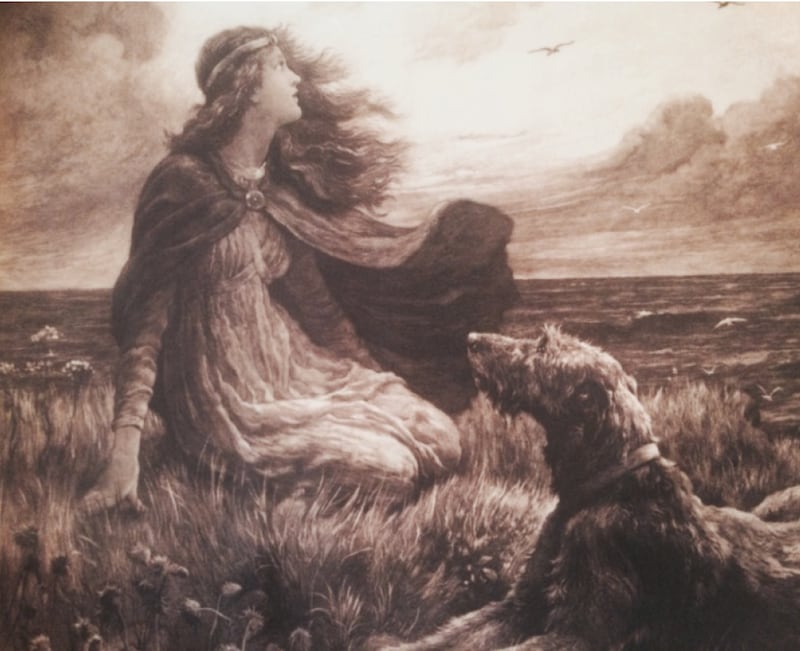
What is true is that the Celtic tribes of Europe kept large and fierce dogs, and these are mentioned by Julius Caesar in his history of the Gallic Wars. In Ireland, these dogs were primarily used, as their name indicates, for hunting wolves. However, by the end of the eighteenth century, the Irish wolf had been hunted to extinction. This had obvious and ominous implications for the future of the dog that had been bred to kill them. As the eighteenth century progressed, the decline in the number of Irish Wolfhounds began to parallel that of their former prey.
In 1774, the novelist, poet and playwright Oliver Goldsmith published his wonderful compendium, A History of the Earth, and Animated Nature. In its eight volumes, Goldsmith covers a great deal of ground, from “mines and mineral vapours” to “winds, irregular and regular”, seeking to combine detailed biological descriptions with complex emotional responses to the natural world. The section entitled An History of Animals includes a lengthy and deeply ambivalent discussion of the “great Irish Wolfdog”, which he regarded as the “most wonderful” breed and “the first of the canine species”.
There is a sense that Ireland, in Goldsmith's eyes, has lost its Wolfhounds just as the deserted village in his poem has lost its people
Goldsmith declared a personal connection with this dog, claiming that his mother’s life had once been saved by a Wolfhound. He describes the breed as “extremely beautiful and majestic as to appearance”. He also acknowledges, however, that the dog is “very rare even in the only country in the world where it is to be found”. According to Goldsmith, the ancient Irish hound was now “kept for show (rather) than use” because there were “neither wolves nor any other formidable beasts of prey in Ireland that seem to require so powerful an antagonist”. Goldsmith suggests that the animal had merely become a kind of “curiosity” that is “bred up in the houses of the great”. This theme of a redundant purpose is reinforced by Goldsmith’s assertion that the Wolfhound is “neither good for hunting the hare, the fox, nor the stag, and equally unserviceable as a house dog”. It is clear that Goldsmith saw little future for the breed:
They were once employed in clearing the island of wolves, which infested it in great plenty; but these being destroyed, the dogs are also wearing away, as if nature meant to blot out the species, when they had no longer any services to perform.
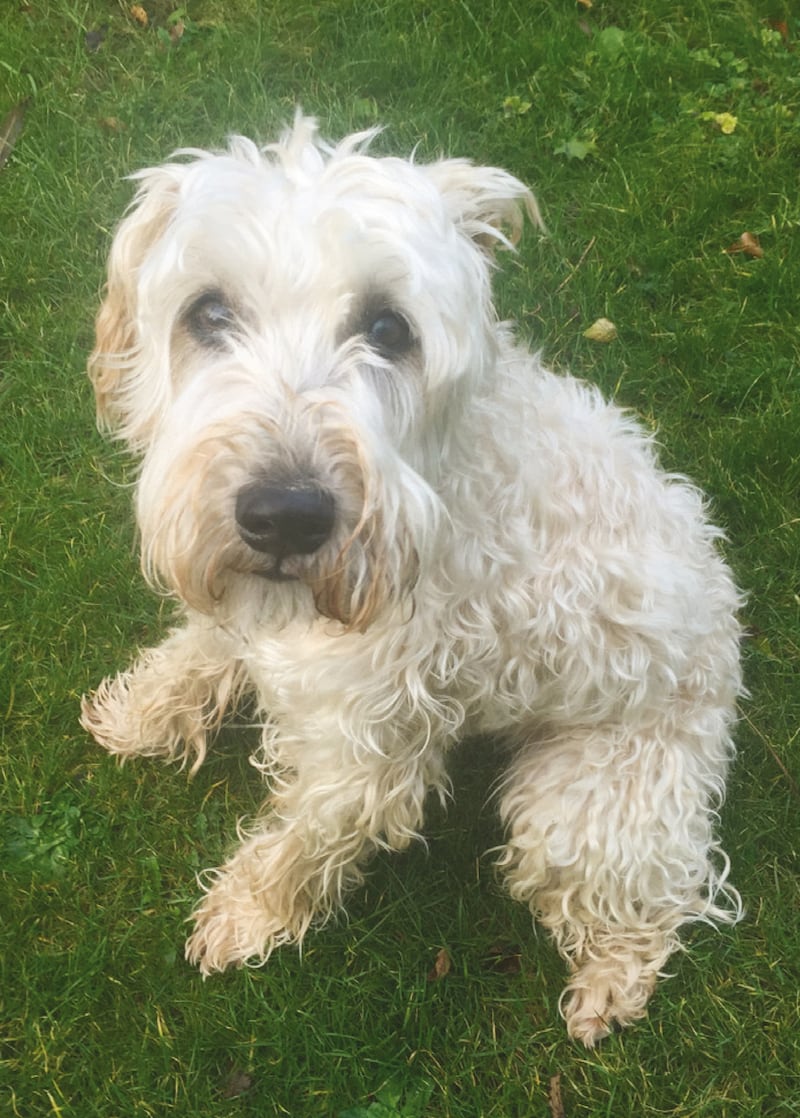
This passage reminds me of some themes that Goldsmith had explored a few years earlier in The Deserted Village. That poem laments the collapse of a vibrant human community that had once seemed fixed and stable, just as the Wolfhound had once seemed a permanent feature of Irish life. There is a sense that Ireland, in Goldsmith’s eyes, has lost its Wolfhounds just as the deserted village in his poem has lost its people. In both cases, dogs and humans have seemed powerless to change their destiny, and have moved inexorably towards their own extinction.
This ancient breed of dog may have become extinct as Goldsmith predicted, but, by the end of the nineteenth century, the modern Wolfhound breed had been established. Ironically, this quintessential Irish dog had been developed in rural England, and could number Russian, Scottish and even Tibetan dogs among its ancestors. The Wolfhound had also become caught up in contemporary political controversies, and was deemed by some young Nationalists to be too closely associated with Ireland’s landed gentry. Their affections began to move towards some of Ireland’s other native dogs, and this may explain why plans were eventually formed to replace the Wolfhound as Ireland’s de facto national breed.
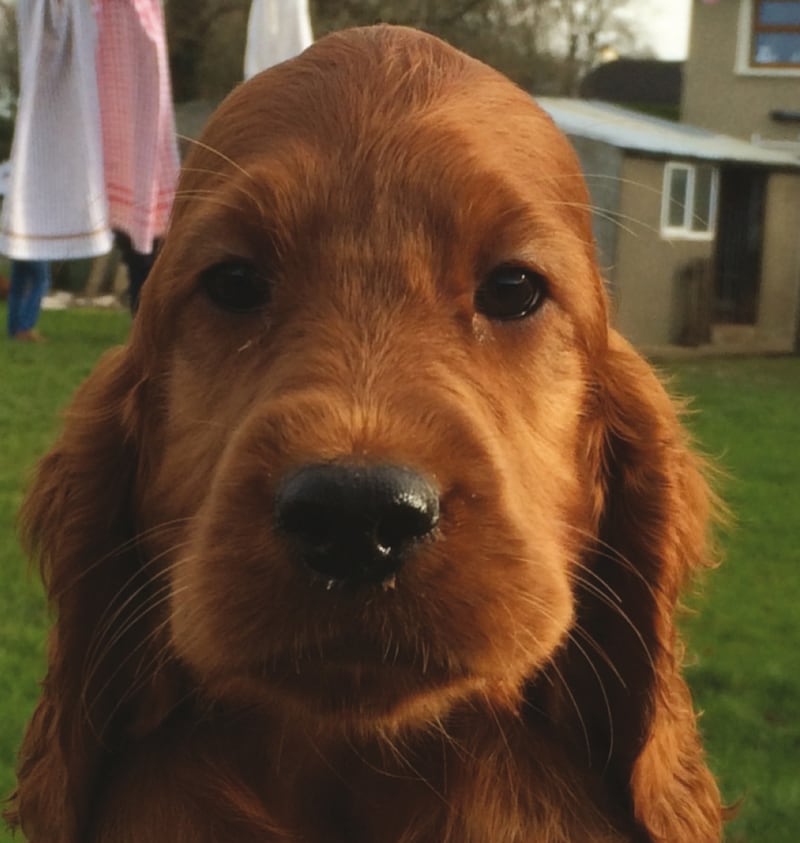
Some of the issues arising from such disputes were satirised by James Joyce in the Cyclops episode of Ulysses. Most of this rich and complex episode takes place in Barney Kiernan’s pub in the centre of Dublin. In Kiernan’s pub we meet a radical Irish Nationalist called The Citizen, who is a virulent racist, and who is accompanied by his equally malevolent dog, Garryowen. This was the name of a famous Irish Red Setter, a champion show dog who was owned by a dog breeder called James Giltrap. His daughter, Josephine, had married Joyce’s uncle, which means that Joyce was related to the Giltraps by marriage, and was more than likely aware of both Garryowen and his owner. This might suggest that Giltrap’s dog is the real-life model for Joyce’s dog, but that interpretation may be too literal, and risks missing the point of Joyce’s satire. There are other ways of understanding what is, for me, the most remarkable dog in modern fiction.
Garryowen is described by Joyce in the inflated and mock-heroic idiom he uses to parody the Celtic Revivalists. However, he is also described by the unnamed narrator in much less reverential terms
Garryowen is described by Joyce in the inflated and mock-heroic idiom he uses to parody the Celtic Revivalists. However, he is also described by the unnamed narrator in this episode in much less reverential terms. Indeed, Garryowen is dismissed both as a “bloody mangy mongrel” and as “the famous old Red Setter wolf dog”, suggesting that his bloodline is far from pure. The name of Garryowen may have been attached to a real Red Setter. But this was also the title of a drinking song, and a musical air that was closely connected with Irish regiments of the British Army. The same air was commonly used by contemporary Orange bands, although the lyrics included lines, such as “We’ll kick the Pope before us”, which were rather different from those found in the original.

There was also more than one Irish unit of the British Army that kept a Wolfhound as a mascot. A Wolfhound had been presented to the Irish Guards when the regiment was formed in 1903, and in 1915 it was widely reported that the Third Battalion of the Munster Fusiliers had been presented with one, which was also called Garryowen. Against that background, Joyce was clearly satirising the confused and contradictory legacy left in the wake of what he had termed the “nightmare” of Irish history.
Viewed from that perspective, the “national dog” of Ireland is, in reality, nothing more (or less) than a mongrel, and the progeny of many different and unknown breeds. In other words, the dog’s alleged origins in the mists of Celtic antiquity represent a confused and confusing fantasy, and a doomed attempt to recreate a lost pedigree. The same, it may be inferred, applies to the grandiose ambitions of the Revivalists, as well as to the nonsensical claims about Irish history that are spewed out by The Citizen. As Sam Slote has pointed out, for Joyce, dogs are always mongrels, but it is “precisely in this mongrelisation that they might have some affinity to the Irish”.
So far as I am aware, there is only one Irish Water Spaniel that features prominently in Irish fiction, and that is Maria, the memorable bitch that appears in Somerville and Ross’s collections of short stories about an English Resident Magistrate (R.M.) in Ireland in the late nineteenth century. When I was a teenager, my mother recommended that I read the R.M. stories, which she adored. However, I found that I disliked them, and I took an adolescent delight in drawing my mother’s attention to what I considered to be their principal shortcomings.
Above all, I was irritated by what seemed like a heavy reliance on quaint Irishisms. These were usually hyperbolic expressions: “the hair is after falling off me head, and the heart is scalded on me” sort of thing, which I presumed readers were supposed to find charming and amusing, but which left me distinctly unimpressed. It turns out that these phrases were reproduced faithfully from the notebooks that Edith Somerville carried around with her, and in which she jotted down any striking extravagance of speech that she overheard.

Some years later, I was asked to teach a university course on Anglo- Irish literature, and I went back to the novels and stories that Somerville and Ross had written. I found to my surprise that they seemed to have improved greatly since I had last read them. Of course, the changes were in me. I should not have mocked my mother: her judgment proved to have been better than my own. The fiction these two women produced is not only extremely well written, it also provides a penetrating insight into the twilight years of the southern Irish landed gentry. It was a world that they clearly knew inside out, and they wrote about it with a quiet but firm authority, along with a sense of critical distance.
The central dynamic in the R.M. stories is generated between an English representative of the British administration in Ireland, and a member of the local gentry and landowning classes. On one hand there is Major Yeates, a Resident Magistrate, who is portrayed as a well-meaning, but rather dull official, who invariably fails to grasp the small but vital nuances of life in rural Ireland. On the other hand, there is Flurry Knox, a member of the local Irish gentry. Knox is driven by a kind of anarchic energy that verges at times on outright madness, but he also reveals a deep and intuitive understanding of his social environment. The relationship of Yeates and Knox is set against a backdrop of other Irish characters – eccentric landlords, stroppy servants, cunning farmers and assorted ne’er-do-wells – who are a source of bewilderment for Yeates, but entertain Knox. Maria, the Irish Water Spaniel bitch, is one of the key players in this supporting cast.
The choice of a Water Spaniel in this context is significant in several respects. For obvious reasons, the breed was favoured in those counties in Ireland where there was an abundance of marshes, loughs and bogs – indeed, the spaniel was sometimes known as a “bog-dog”. Although the Water Spaniel was often found in the homes of the hunting and shooting landowning classes, its owners tended to belong to the minor gentry. Writing in the 1870s, JS Skidmore, an authority on gun dogs, commended the Water Spaniel to gentlemen of limited means, or those who “have not the accommodation to keep a team of dogs”, since the Irish breed could be trained “to perform the duties of pointer, setter, retriever and spaniel” – a kind of canine one-stop shop.

In fact, ownership of the Irish Water Spaniel was not restricted to minor landowners. This was a hard-mouthed hunting dog that not only found game, but could catch and kill birds as well as retrieve them, which meant that ownership of expensive guns was not essential to the hunt. The unruly and excitable demeanour of this spaniel, and its apparently unkempt appearance, also meant that, unlike the Wolfhound or Red Setter, it was seldom praised for its aristocratic bearing, or for the dignified impression it created.
Part of Maria’s role in these stories involves her capacity to span some of the different social, ethnic and political traditions within Ireland. In this, she may even reflect a balance in the different political perspectives of the two writers, Edith Somerville and Violet Martin (who wrote and was published under the name of Martin Ross). They were cousins, but Martin was a committed unionist, while Somerville came to sympathise with the cause of Irish nationalism, and would often perform patriotic songs when called upon to sing at parties. (Sadly, her brother was murdered by the IRA at the family home in 1936.)
In other respects, the political views of both cousins were similar and progressive. They were convinced suffragettes, and active in the contemporary campaign to extend voting rights to women, with Martin acting as vice-president of the Munster Franchise League. As Declan Kiberd has argued, the R.M. stories link “nostalgia for a dying way of life” with the subversive portrayal of a succession of “strong and vital” female characters. One of these females is the formidable Lady Knox, another is Maria the Water Spaniel.

One of my favourite passages in the R.M. stories that features Maria is narrated, as usual, by Major Yeates. He explains that the spaniel had been given to his wife as a wedding gift. She had hoped the bitch would grow to resemble the noble Irish Wolfhound Gelert, (as described in William Spencer’s famous poem), and would prove to be “a lamb at home, a lion in the chase”. It seems this was a forlorn hope. Yeates accepts that Maria has performed “pretty well as a lion”: she has chased “all dogs unmistakably smaller than herself”, and whenever possible has eaten the game that her master has shot.
However, Major Yeates reckons that Maria has not proved very effective as a lamb: she has snatched “cold beef from the luncheon table” and scratched “the paint off the hall door” when she was banished for her crimes. She has also bitten beggars, bullied servants and hidden “ducks’ claws and fishes’ backbones” behind the sofa cushions.
Despite all these transgressions, Yeates confesses that when Maria lays “her brown snout” upon his knee, or rolls “her blackguard amber eyes” or tries to smite him with “her feather paw”, he finds it impossible to remember her iniquities. When he prepares to go on a hunting expedition with the dog, Yeates admits that she ceases to be “a buccaneer, a glutton and a hypocrite”. In fact, as soon as Maria realises that there is the possibility of a hunt, she cannot eat any breakfast due to her nerves, and waits in the hall, “shivering with excitement” while “agonising in her soul” that her master might leave without her.
The passage reveals a genuine appreciation of the Irish Water Spaniel. It also expresses exasperation, affection and co-dependence connected to the ambivalent relations between a colonial power and Ireland's native population
Maria’s insatiable appetite for hunting parallels that of Flurry Knox, who seems permanently to be dressed in riding gear, as if he were always ready to jump on his horse and lose himself in the delirium of the chase. However, the passage from which I have quoted reveals a genuine understanding and appreciation of the Irish Water Spaniel breed. It also expresses themes of exasperation, affection and co-dependence that are connected to the ambivalent relations between a colonial power and Ireland’s native population – which clearly includes the local gentry.
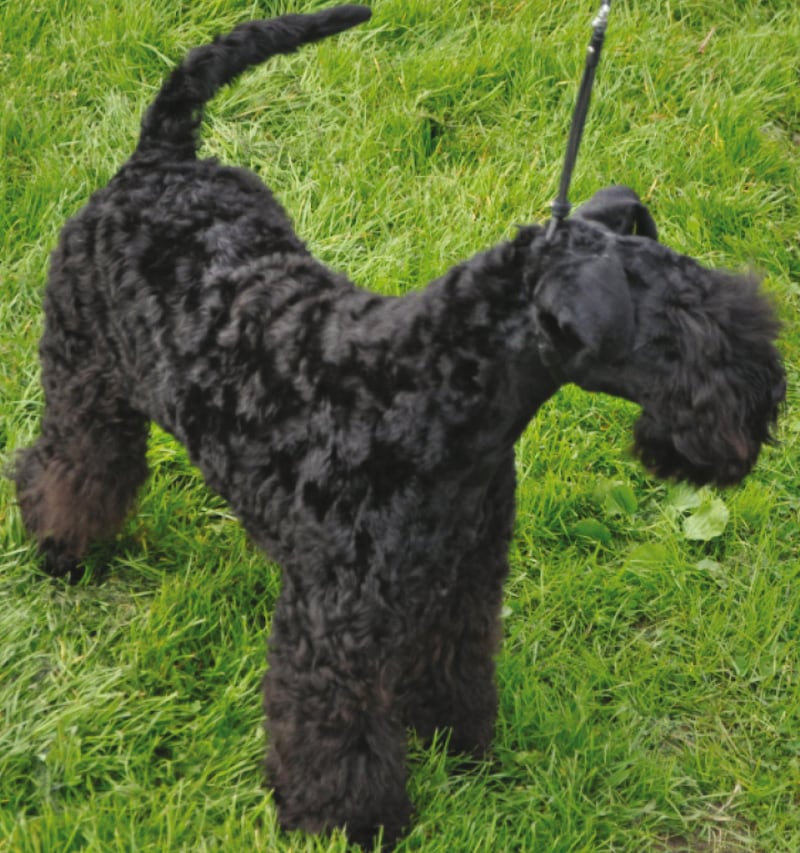
The Kerry Blue terrier became the favourite native breed of many young nationalists at the beginning of the last century. The dog was considered to be “racy, and of the soil”, and, perhaps more importantly, it was not associated with the landed gentry. That may explain the appeal of the breed to Michael Collins – who planned to make it our official National Dog.
However, not all of the Blue dog’s owners were ardent nationalists. One owner of these terriers in the 1920s was May Beckett, the mother of the Nobel Laureate Samuel. May Beckett is generally considered to have been an emotionally withdrawn woman who lavished an open affection on her dogs that she denied to her younger son. Samuel Beckett sometimes has the reputation of being a cerebral and austere intellectual. It is true that he was not in the habit of wearing his heart on his sleeve, but, for me, his work expresses the most profound of human values and emotions. He also shared his mother’s feelings of deep affection for the family dogs, and spent long hours walking the Wicklow hills accompanied by a Kerry Blue.
Beckett was particularly fond of one of the terriers, a bitch called Wolf. In time, the beloved dog grew old and sick, and Beckett’s mother arranged for her to be euthanised while Beckett was away from home. “The old bitch was destroyed,” Beckett wrote, “unbeknownst to me.” He was extremely upset, and said he had “wanted to be with (Wolf ) at the end, to try and make it perhaps a little easier”. His mother apparently thought the dog should be euthanised, or “destroyed” in Sam’s words, in his absence to spare him the pain of seeing her put down. However, Beckett found he “could not take a reasonable view” of the terrier’s death, and became so depressed he may even have contemplated suicide.
Dogs feature with surprising regularity in his subsequent novels and plays. Beckett writes about them with considerable empathy, but does not claim to understand the unknowable nature of a different species. In his early novel Malone Dies, he describes an old dog that is fast approaching death. Beckett being Beckett, this is written with the underlying emotion working against the grain of obvious sentimentality, and the passage carries a characteristic sting of black humour in its tail:
To old dogs the hour comes when, whistled by their master setting forth with his stick at dawn, they cannot spring after him. Then they stay in their kennel, or in their basket, though they are not chained, and listen to the steps dying away. The man too is sad. But soon the pure air and the sun console him, he thinks no more about his old companion until evening. The lights in his house bid him welcome home and a feeble barking makes him say, It is time I had him destroyed.
David Blake Knox is the author of The Curious History of Irish Dogs (New Island, €20)
